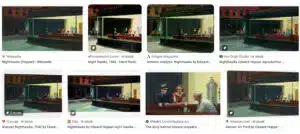The more you familiarize yourself with good composition, the easier it will become for you to be able to add this element to your photos, and a great way to learn this is by studying great paintings and the principles used to create these.
I recently came across this fascinating article: “The 31 Top Composition Concepts for Great Painting” by master oil painter Bill Inman and I couldn’t help but notice the similarities between photography and painting.
The way he talks about composition reminded me of something the great Panamanian author, Herminso Rovira E., the father of one of my best friends, used to tell us when we were teenagers: “The world in which you live will be limited to extent of your knowledge.”
In retrospect and with the luxury of the wisdom acquired through time, I’ve come to interpret this to mean the more knowledge you have the more likely you are to expand not only your circle of influence but also the limits of your own creativity.
So, when Inman talks about painting using words such as, “line, shape, color, value, edges, S-Curve, Dynamic Symmetry, Rule of Thirds, mass, pattern, unity, etc.” He might as well be talking about photography.

“Regla Sunset” by Essdras M Suarez.
So, this got me thinking, “What was it exactly about this composition that led them to such a conclusion?”
I don’t claim to possess the vast knowledge or academic language Inman has on this topic. But I can always tell why a photo works or doesn’t work. Let’s star with the premise that this photo is a photo that works.
The first thing that comes to mind is the similarity of the color palette being used in both pieces. Specifically, the use of strong yellows. The compressed feel of the photo was created by my choice of optics and in Hopper’s painting by his choice of shadow-rendering technique. Also, both contain easily- identifiable individual subjects claiming their own space within the frame and within the canvas. All of these elements are telltales of great composition.

One could continue to examine ad nauseum the similarities between these two. But, at this point, I’ll just let you reach your own conclusions.
However, the one thing I can tell you for sure is that we, photographers, face a much harder task since we do not face a blank canvas where we get to be the sole deity in charge of creation. But instead, we start with an-already full canvas for the world in which we operated is already brimming with compositional elements.
At the end of the day, what you choose to learn about composition and how you apply these concepts while you consider other important aspects such as light, tones, mood, shadows, decisive moments, etc will determine whether your work has that synergistic je ne sequa that’ll make your photos memorable. Or whether they’ll live ephemerally in the pantheon of forgotten images.


